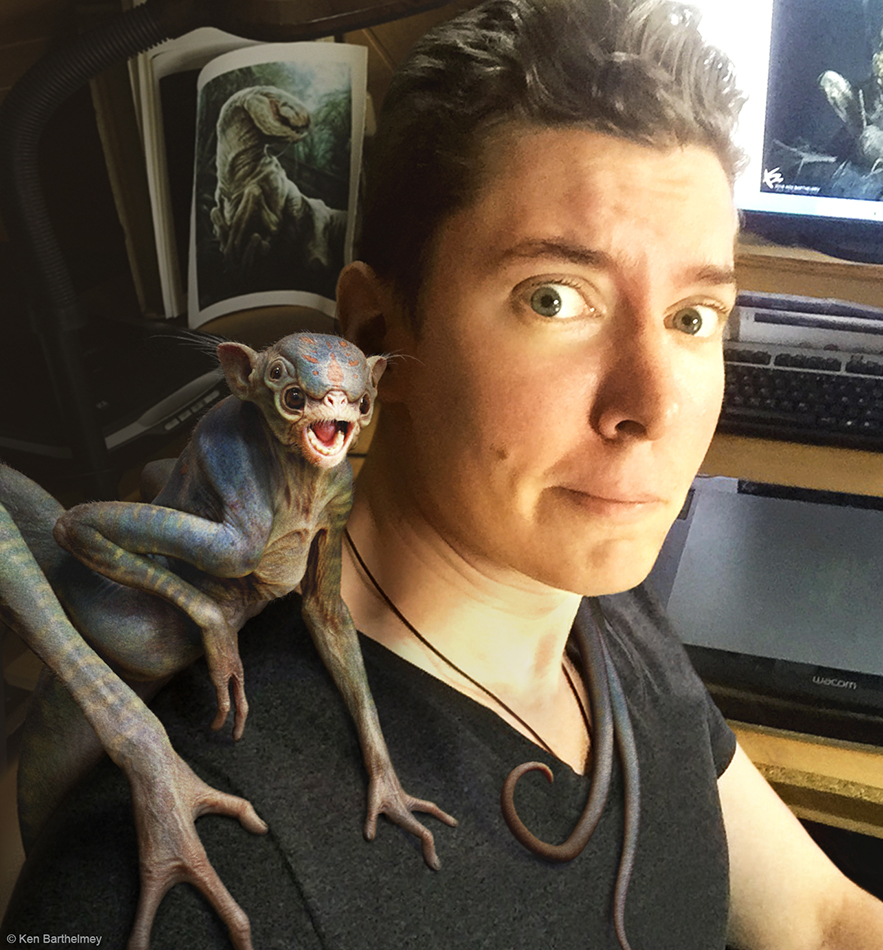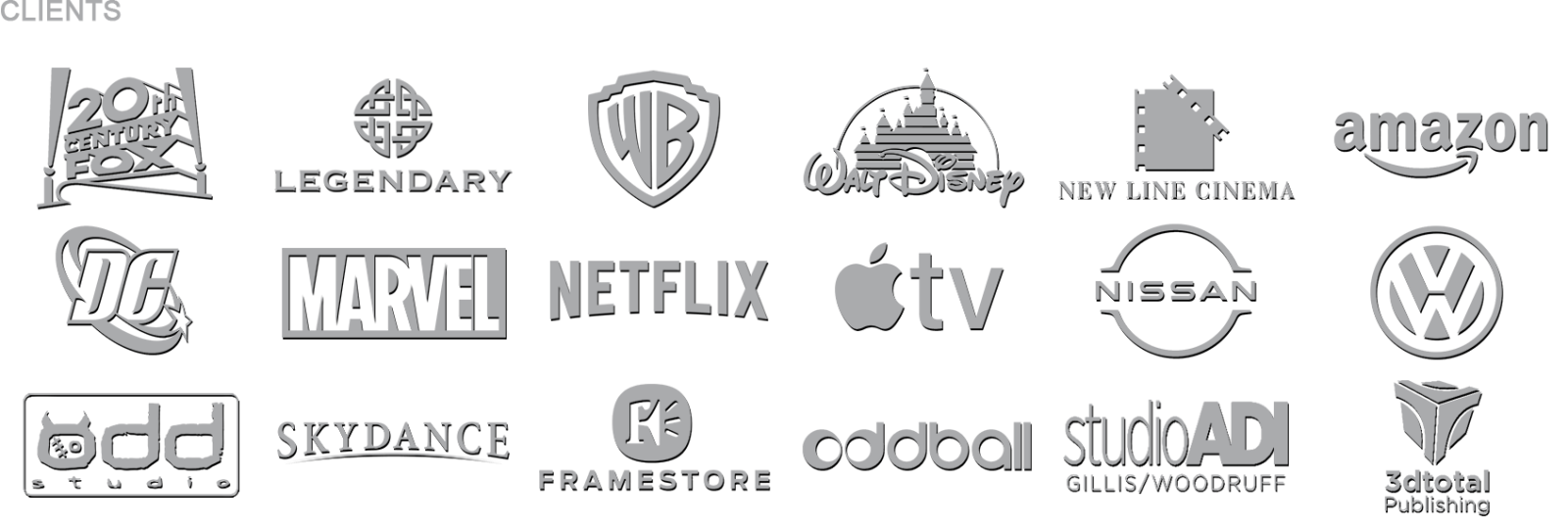 KEN BARTHELMEY
KEN BARTHELMEYKen Barthelmey is an award-winning Creature & Character Designer from Luxembourg, working professionally in the movie industry. In 2012 he designed the Grievers for the film 'The Maze Runner'. Since then Ken has completed creature designs for a vast array of other popular films, including: ‘Fantastic Beasts 2’ (2018), ‘IT’ (2017), ‘Godzilla: King of the Monsters’ (2019) and most recently 'The Tomorrow War' (2021) in which he designed the aliens called White Spikes.
Ken is a self-taught artist who showed a great passion for drawing and sculpting at an early age. Especially movie monsters had always fascinated him. Films like Jurassic Park, Star Wars and Aliens had a big impact on his life, leading him to his profession today as a Creature and Character Designer.
Ken always pushes himself to create authentic and unique designs. Whether traditional or digital media, he constantly tries to advance his skills and techniques. His multifaceted work, that consists of 2D and 3D, has earned him several awards such as the Chesley Award for best Cover Illustration.
AWARDS
In 2013 he was honored with the Chesley Award for Best Magazine Cover Illustration, announced and presented by ASFA at the 71th World Science Fiction Convention in San Antonio. His work has also won several other awards, such as the CG Choice Award, 3DTotal Excellence Award, CGArena Excellence Award, CG Gallerie Award, The Golden Eye, The Golden Topia Award, and Infected by Art Gold Award.
MEDIA
- Oil Painting
- Watercolor
- Airbrush
- Pencil
- Pen
- Clay
SOFTWARE
- Adobe Photoshop
- Adobe After Effects
- Luxology Modo
- Pixologic Zbrush
- Luxion Keyshot

FREQUENTLY ASKED QUESTIONS
- How much creative freedom do you have when designing a creature for a film, and how precise is the briefing?
How precise a briefing is varies on each film, however there is never a clear description of a design. I usually come on board of a production very early on, mostly when the script is still in development. Directors want to see different options they can choose from, therefore I have the most creative freedom in the beginning. At this early stage it is mainly about developing ideas and coming up with solutions, and once a design got picked I receive notes for possible alterations.
- What is a typical pipeline you go through as a concept artist, after receiving an initial brief for a creature?
Coming up with ideas is the hardest part of the job, but once a direction is set it’s pretty much refining the design until it gets approved by the director. Therefore when I work on a design, I always start with 2D drawings because it’s the fastest way for me to bring ideas on paper. After a sketch got approved I have a clear goal and I can focus on creating the 3D model, and develop the design further in three dimensions.
Sometimes it can be difficult to judge a rough pencil sketch, therefore I prefer to present more refined drawings to the client. A drawing should never be seen as the final design thought, it's only the first brick in the wall.
- How do you make a good design that is believable?
To make a good design, I think it’s important to find a good balance between realism and imagination. If you design a creature too outlandish or abstract, it will look unbelievable and silly. And vice versa. If you make a design too realistic, it will look boring. I love seeing actual anatomy in a design, this makes it look more grounded. Using reference photos from real-life animals is a great help to accomplish that. The goal is to come up with something new and original and avoid making it look similar to an already existing design. This is always very challenging and the hardest part of the job
To make a good design, I think it’s important to find a good balance between realism and imagination. If you design a creature too outlandish or abstract, it will look unbelievable and silly. And vice versa. If you make a design too realistic, it will look boring.
- How long does it take to design a creature?
That's difficult to answer since it can vary greatly depending on a number of factors, including schedule, budget and complexity of the design. In general, completing a design can range anywhere from a few hours to several weeks. When starting with a new design I like to have time for research and coming up with ideas, because the more thoughts go into a design the better the result.
- Do you have any advice for students?
Start learning the fundamentals of drawing and study anatomy. Anatomical knowledge is very important when you want to design believable characters and creatures.
A good training is the regular sketching of animals. It is important to know all muscle and bone structures.Once you understand how anatomy works you’ll be able to come up with new body shapes that don’t exist in the real world but could exist. Then proceed learning 3D sculpting programs and how to render your designs in a compelling way.
If you want clients to hire you as a designer, I suggest creating a portfolio with your own original designs. Follow your passion and ask yourself what kind of jobs or projects you actually want to work on. I love designing characters and creatures, so I made sure to create a portfolio that matched to my skills. That’s important because clients hire you based on what they see in your portfolio.
- What makes a good Artist/Designer?
From the technical side, I believe everyone can learn how to draw and paint. It's all about how hard you are working on your skills and how disciplined you are. But what a good Artist/Designer marks is creativity. Creativity makes every artist unique; you need to be able to come up with singular ideas and solving problems in the easiest way.
Follow your passion and ask yourself what kind of jobs or projects you actually want to work on. I love designing characters and creatures, so I made sure to create a portfolio that matched to my skills.
